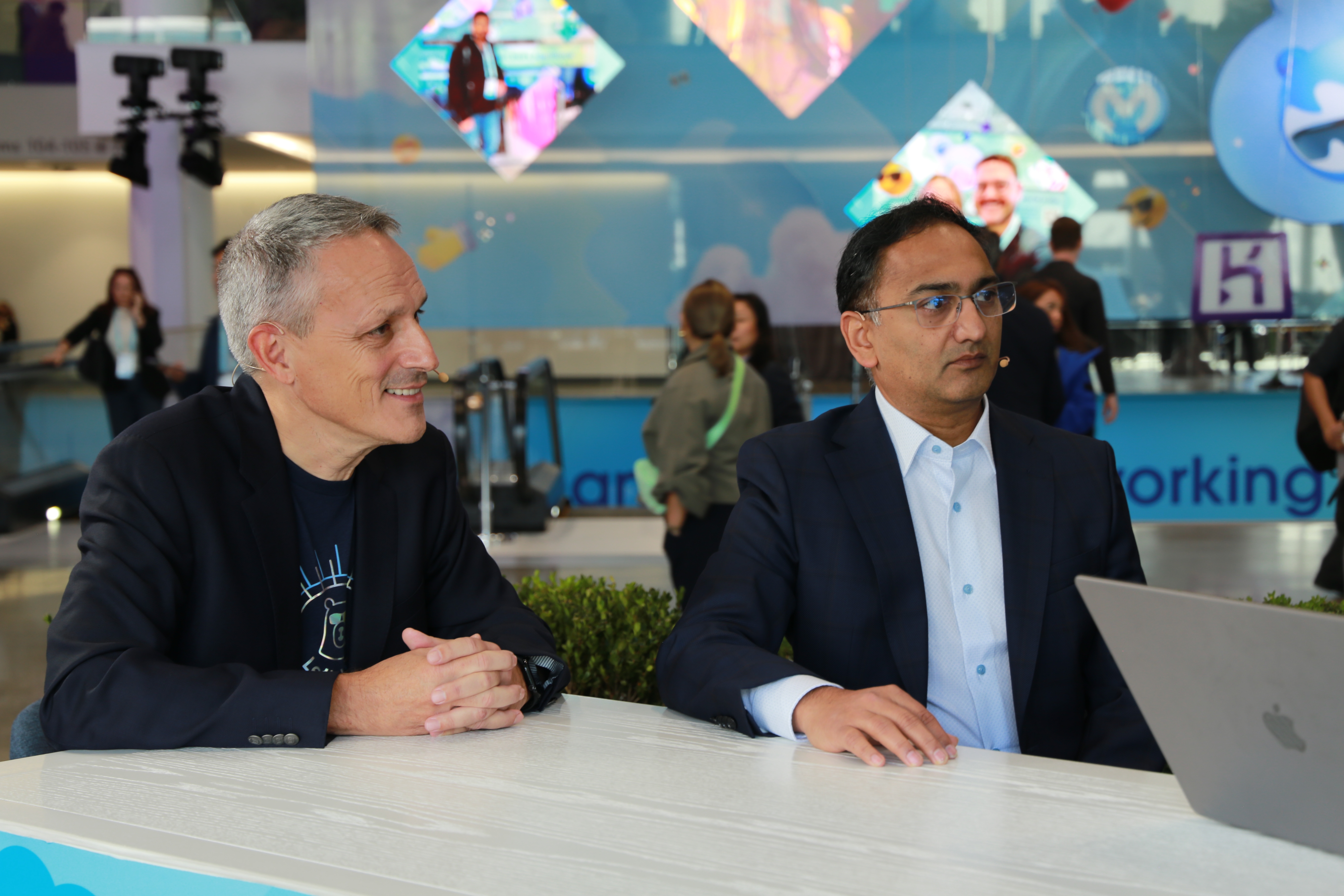 AI
AI
 AI
AI
 AI
AI
Code is entering a new creative era — one where the development lifecycle itself is becoming a living, adaptive system. Engineers are no longer just writing code; they’re orchestrating an evolving interplay between data, logic and automation that redefines how software grows and improves over time.
As agentic systems mature from prototypes to production-ready tools, development is shifting from speed to sophistication. The focus now lies in crafting workflows that mirror human reasoning, ensuring systems can learn, adapt and act with purpose. It’s a reinvention of engineering culture — merging experimentation with precision and transforming the once-linear process of software delivery into an ongoing dialogue between human intent and computational design, according to Jayesh Govindarajan (pictured, right), executive vice president of software engineering at Salesforce Inc.

Salesforce’s Jayesh Govindarajan and Christophe Coenraets talk about the AI development lifecycle.
“We are seeing the birth of a new development life cycle, an agent development life cycle … and pretty much all the tools that we are building around it — a studio for creating agents, a testing center for testing them, an observability command center for seeing fleets of agency in action and then being able to run that loop to make them better over time; that’s the iterative cycle,” Govindarajan told theCUBE. “Developers are operating at a much higher level than before. Don’t make the mistake of thinking that this is the same work that used to happen before.”
Govindarajan and Christophe Coenraets (left), senior vice president of technical audience relations at Salesforce, spoke with theCUBE’s John Furrier and George Gilbert at Dreamforce, during an exclusive broadcast on theCUBE, SiliconANGLE Media’s livestreaming studio. They discussed how Agentforce is redefining AI-driven software creation, enterprise vibe coding and the craftsmanship behind modern development. (* Disclosure below.)
Agentforce’s growing adoption highlights the industry’s hunger for tools that streamline production without losing rigor. The platform now serves about 12,000 customers, half of whom are paid users, according to Govindarajan. Each deployment has taught new lessons in reliability, determinism and creative flexibility — the qualities that distinguish demos from production-ready agents.
“If you go to Williams-Sonoma today, you can go onto their website and there’s a sous-chef agent, which is basically built on Agentforce,” he said. “You’re going from a creative process to a more lockdown process, which is now [that] you’re exchanging monies, you’re going from insight to commerce.”
The creative-to-deterministic balance is at the core of enterprise adoption. Developers must manage when an agent can improvise and when it must follow strict rules. That tension — between openness and structure — is what Salesforce calls “vibe coding,” according to Coenraets.
“Vibe coding is going to give you the quick prototype, but in the enterprise, developers want security, they want trust, they want governance, and they also want the code to be grounded in the metadata that they have and all the security features. Enterprise vibe coding is really filling that gap, and what we are showing here with Agentforce Vibes is exactly that: Vibe coding for the enterprise.”
AI’s influence on the development lifecycle extends beyond the code itself. Developers are discovering new ways to design user experiences around unpredictable agent behavior. This innovation means preparing for tasks that may not have existed at design time — a catalyst for conversational user experience to become the new default in enterprise apps, Coenraets explained. As enterprises continue refining their AI strategies, the development lifecycle is becoming a blueprint for how creativity and control can coexist at scale.
“Agentic AI [is] completely changing how you build software,” he said. “IT shops have incredible backlogs. I think what you’re seeing is that because the productivity is much higher, it means more software is being built, and I think developers are feeling that.”
Here’s the complete video interview, part of theCUBE’s coverage of Dreamforce:
(* Disclosure: TheCUBE is a paid media partner for Dreamforce. Neither Salesforce, the sponsor of theCUBE’s event coverage, nor other sponsors have editorial control over content on theCUBE or SiliconANGLE.)
Support our mission to keep content open and free by engaging with theCUBE community. Join theCUBE’s Alumni Trust Network, where technology leaders connect, share intelligence and create opportunities.
Founded by tech visionaries John Furrier and Dave Vellante, SiliconANGLE Media has built a dynamic ecosystem of industry-leading digital media brands that reach 15+ million elite tech professionals. Our new proprietary theCUBE AI Video Cloud is breaking ground in audience interaction, leveraging theCUBEai.com neural network to help technology companies make data-driven decisions and stay at the forefront of industry conversations.